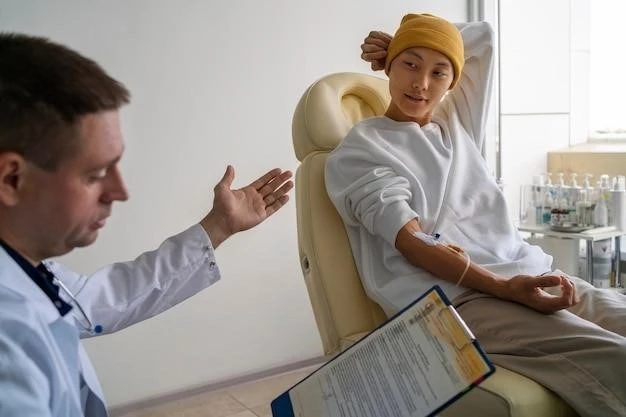Introduction to Nemaline Myopathy
Nemaline Myopathy (NM) is a genetically inherited muscle disorder characterized by muscle weakness. It primarily affects skeletal muscles used for body movement. The presence of nemaline bodies in muscle biopsy is a defining histological feature of this condition.
Nemaline Myopathy (NM) is a genetically inherited muscle disorder characterized by muscle weakness affecting skeletal muscles. The condition is often identified by the presence of nemaline bodies in muscle biopsy samples, which are rod-like structures; NM is considered one of the more common forms of congenital myopathy, with varying degrees of severity and onset, ranging from early childhood to adulthood. The prevalence of NM is estimated to be around 1 in 50,000 live births globally.
Genetics of Nemaline Myopathy
Nemaline Myopathy (NM) is a genetically inherited muscle disorder caused by mutations in at least 12 genes٫ with NEB and ACTA1 being the most common genetic causes. These mutations affect skeletal muscles٫ leading to muscle weakness primarily in proximal muscles. Understanding the genetic basis is crucial for diagnosis and potential treatments.
Genes Associated with Nemaline Myopathy
Nemaline Myopathy (NM) is caused by mutations in over 12 genes٫ with NEB and ACTA1 being common culprits. Recent discoveries like the TNNT3 gene and MYO18B mutations shed light on the genetic intricacies of this condition. Understanding these genes is vital for diagnosis and personalized care.
Definition and Prevalence
Nemaline Myopathy (NM) is a rare genetic disorder that affects skeletal muscles, leading to muscle weakness and the formation of rod-like structures called nemaline bodies. It can vary in severity and onset, impacting individuals from childhood to adulthood. The global incidence is estimated to be around 1 in 50,000 live births.
Symptoms and Muscle Weakness
Nemaline myopathy presents with symptoms like muscle weakness that affects various parts of the body, with more severe weakness in the proximal muscles. Patients may experience difficulties with movement, respiratory issues, and feeding problems. The severity of symptoms can vary, impacting the quality of life and requiring tailored management strategies.
Diagnosis and Classification
Nemaline Myopathy (NM) is diagnosed through muscle biopsies that reveal the presence of nemaline bodies. Classification of NM includes different types based on clinical signs, onset, and severity, ranging from congenital forms in early childhood to adult-onset cases. Genetic testing plays a crucial role in confirming the diagnosis and identifying specific gene mutations associated with NM.
Nemaline Myopathy (NM) encompasses a heterogeneous group of congenital myopathies with varying severity and onset. It includes six clinical subtypes based on disease progression and age of presentation, ranging from severe forms with early lethality to milder muscle disorders that may not manifest until adulthood. Understanding the distinct types is essential for tailored management and treatment approaches.
Treatment Options for Nemaline Myopathy
Nemaline Myopathy (NM) lacks a targeted cure, but management strategies aim to improve symptoms and enhance quality of life. These may include physical therapy to maintain muscle strength, assistive devices for mobility, respiratory support for breathing difficulties, and nutritional support to address feeding challenges. Individualized care plans are crucial for optimizing outcomes in individuals with NM.
Types of Nemaline Myopathy
Nemaline Myopathy has six clinical subtypes, each varying in severity, progression, and age of onset. These subtypes range from severe forms that can present in early childhood and potentially lead to early lethality, to milder muscle disorders with a later onset, sometimes not manifesting until adulthood. Understanding the distinct types is essential for tailored management and care.

Prognosis and Long-Term Outlook
Nemaline Myopathy’s prognosis varies, with severe forms affecting lifespan and quality of life. Individuals with this condition often face challenges related to muscle weakness, respiratory issues, and feeding difficulties. Long-term care and support can positively impact outcomes and enhance the overall quality of life for those living with Nemaline Myopathy.
Lifespan and Quality of Life
The prognosis of Nemaline Myopathy varies, with severe forms impacting lifespan and overall quality of life. Individuals with this condition often face challenges related to muscle weakness, respiratory issues, and feeding difficulties. Long-term care and support play crucial roles in managing symptoms and enhancing the quality of life for individuals living with Nemaline Myopathy.

Research and Advancements in Nemaline Myopathy
Current studies focus on exploring novel treatment avenues and potential drug development for Nemaline Myopathy. Researchers are investigating gene therapy, molecular targets, and personalized approaches to manage symptoms and improve outcomes for individuals affected by this genetic muscle disorder. Stay informed about the latest advancements and clinical trials in the field of Nemaline Myopathy.
Current Studies and Drug Development
Research in Nemaline Myopathy is focused on exploring new therapeutic approaches and potential drug developments. Investigations include gene therapy, molecular targets, and personalized treatments to address symptoms and enhance outcomes for individuals affected by this rare genetic muscle disorder. Staying informed about ongoing studies and advancements in drug development is crucial for individuals with Nemaline Myopathy.
